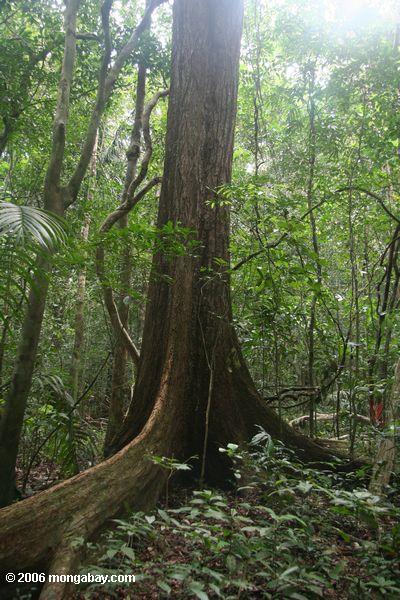Monday, November 16, 2009
Saturday, November 14, 2009
Anaconda
The Amazon Basin, filled with more than one hundred snake species, makes the perfect home to the anaconda snake. It is one of the few snakes that inhabits the water only, although it is capable of moving onto dry land. It preys on whatever comes in its reach, such as rodents, tapirs, capybaras, deer, peccaries, fish, turtles, birds, sheep, aquatic animals, and on the rare occasion people. Anacondas are good swimmers and not usually found in trees. They eat about only once every one or two weeks. They are usually squirmy, but when they are digesting their meal they are sluggish. Small anacondas are one hundred pounds, fifteen feet long, and eight inches wide. Fully grown, on average they are twenty feet long and weigh three hundred fifty pounds. It is rare, but anacondas can reach up to twenty-seven feet long and can weigh up to five hundred pounds. Anacondas kill their prey by first biting it on the neck, taking care not crush it, and then suffocating it to death. This video is of wildlife in the Amazon Region, including the anaconda. Click here to view.

Representaion of Maloca
The maloca represented a person. The ridgepole was the spine and the painted house front was the face. To the Barasana it represented the whole universe. The roof was the sky. The ridgepole was the path of the sun across the heaven. The front door was ‘door of east’ and the back door ‘door of west’. There was an imaginary river under the maloca called the river of the dead. Thenthe sun set west, went upstream through the river, and rose in the east the next morning.

Celebration Dance
After all the work was done the celebration dance begun. It could only be done after the front of the house was painted and it had been attended by all neighboring malocas. It celebrated the end of work and rewarded those who helped. During the dance the shamans chanted and blew spells with smoke from big cigars to make the home strong, protect it form thunder and lightening, and to keep all the inhabitants safe.

Section of Maloca
The malocas had many parts and sections. The men added new sections. One part of the maloca was the garden. The banana trees formed a border between the maloca and the garden. These trees also provided fruit. The gardens were for special plants, like peppers and tobacco, as well as for plants providing medicine and drugs. Some malocas were big gardens called chagras. When sections were to be added to the maloca men collected leaves in the forest. Then they would weave them onto strips of wood. The new sections were put in place from a scaffold inside the house. There were married and unmarried parts of the maloca. Married men made their own screened off compartment in the maloca, where he lived with his wife and children. Unmarried men and guests slept in an open area in the front of the maloca. The maloca included many paths. One path led from the door to the river. Others led from the back door to the gardens, or to a stream. Another led to the forest or neighboring malocas.

Amazon River
The Amazon River was said to have acquired its name from the myth of Francisco de Orellana. It was reported that warriors, similar to the Amazons from the Greek myths, attacked him. Today Brazilians call the Amazon River Amazonas, because of its junction with the Rio Negro. Manaus, the main town in the central area of the Amazon, exists where the Rio Negro joins the Amazon. Another account as to the origin of the Amazon Rivers name might be from the word amassona, which means boat destroyer. The Amazon is 4,000 miles long.It starts in Peru, drops down the Andes, and flows through east Brazil to the Atlantic Ocean. It is the largest in volume and the second longest river in the world. Its width is up to seven miles. It sources in the Andes Mountains. The three main sections of the river are the Rio Negro, White Water, and Manaus. The Rio Negro name comes from its dark and acidic color. It is dark in color because of the Mangrove roots in the river. The people who originally lived by the banks called it the Rio Negro. It is an area free of silt. The white waters are the main course of the river caring away silt and organic matter. It is fed by the Andean tributaries. The natives called it white water. Manaus, where the white and black water meet, runs thirty miles before blending. There are 1,100 tributaries that are interconnected on the Amazon. The Rio Negro is the northern tributary.

Canopy Trees
Subscribe to:
Posts (Atom)
